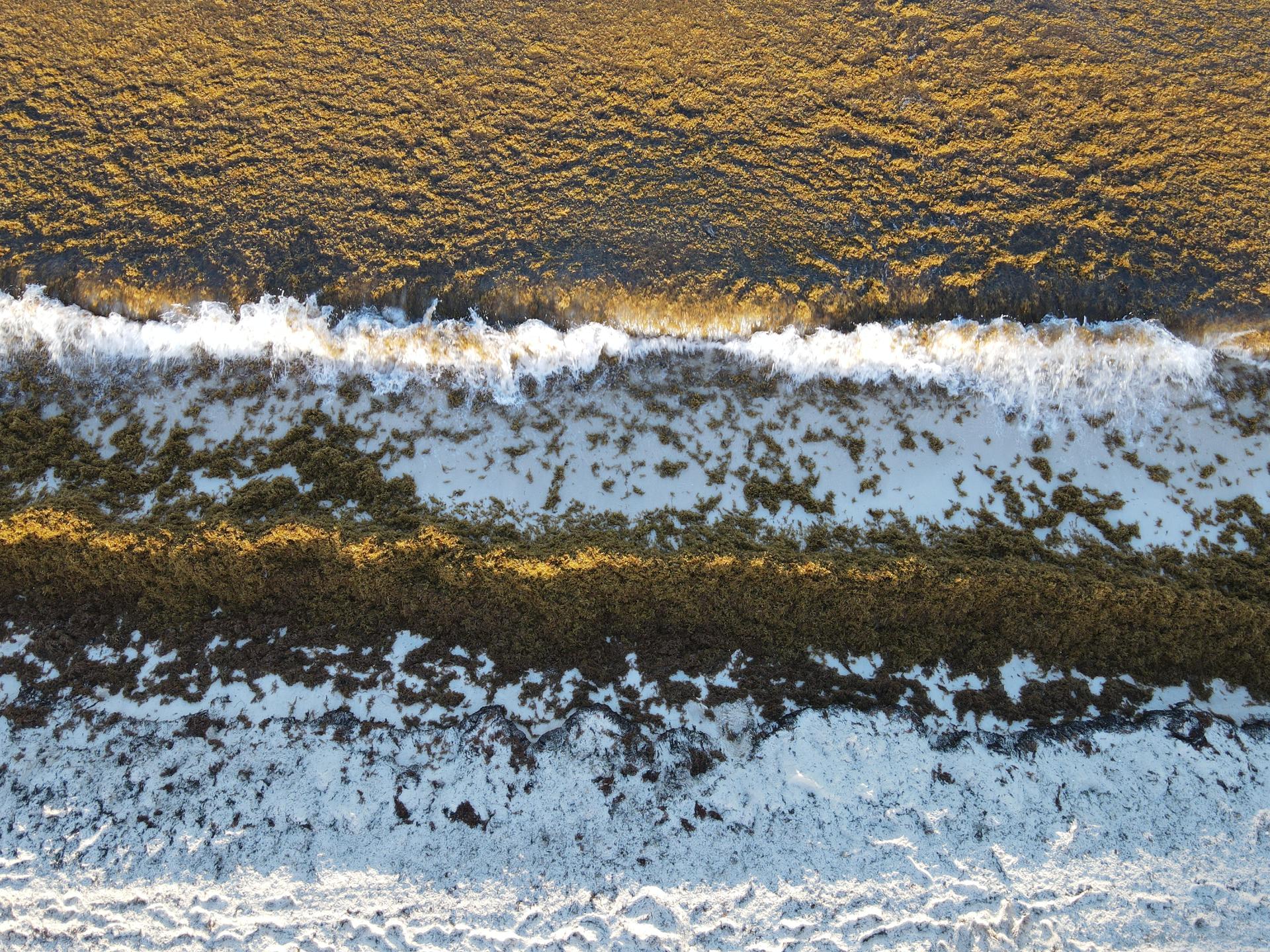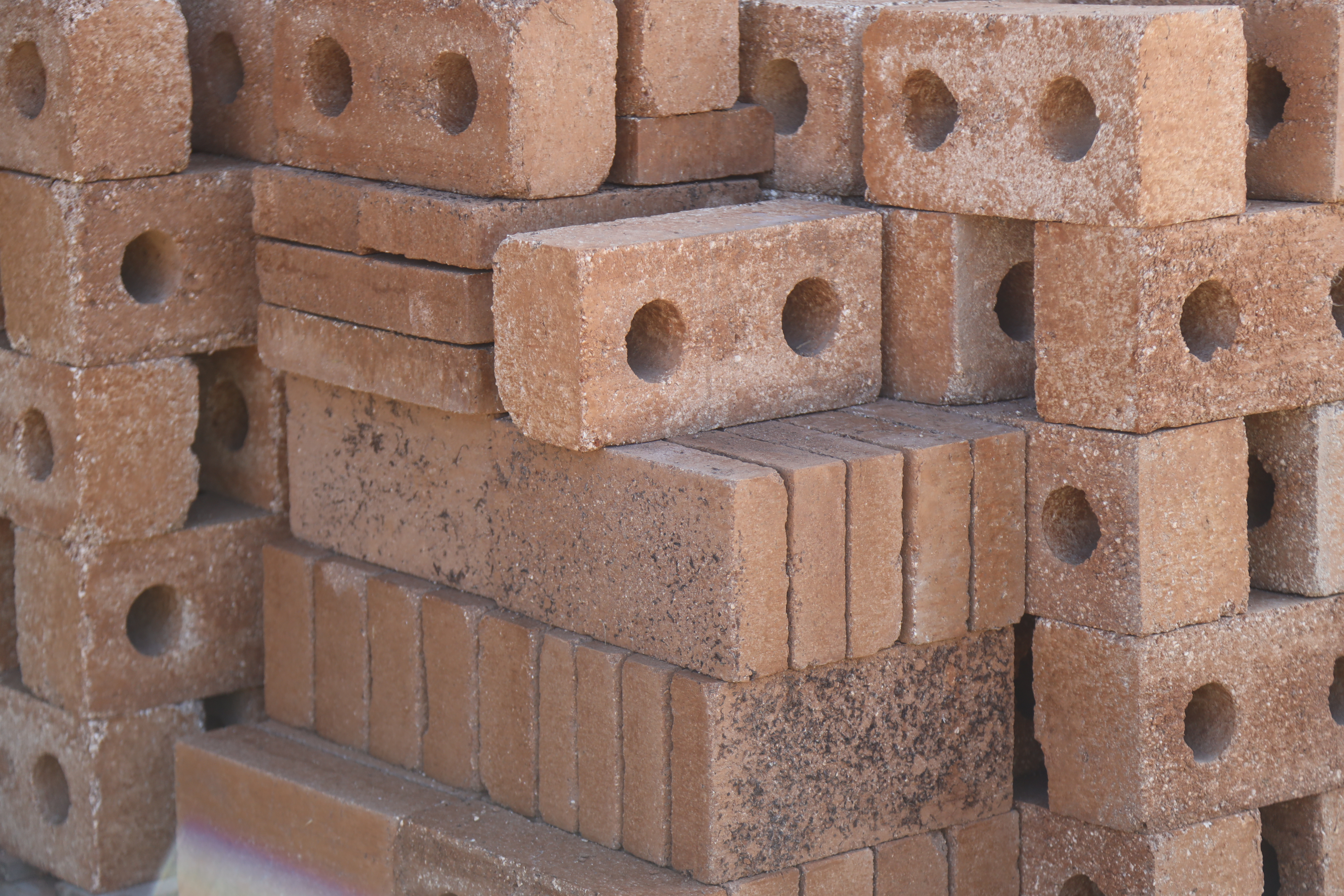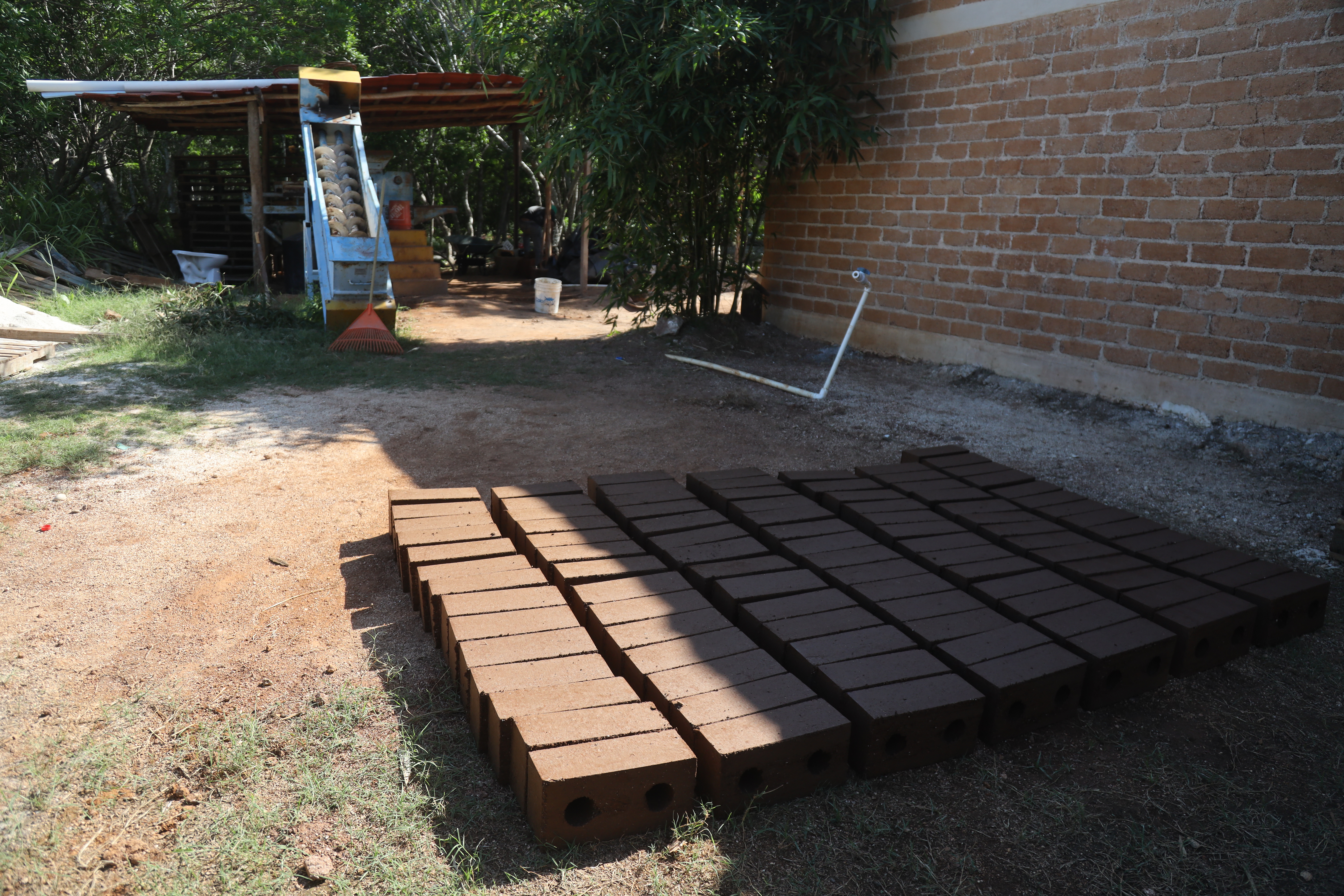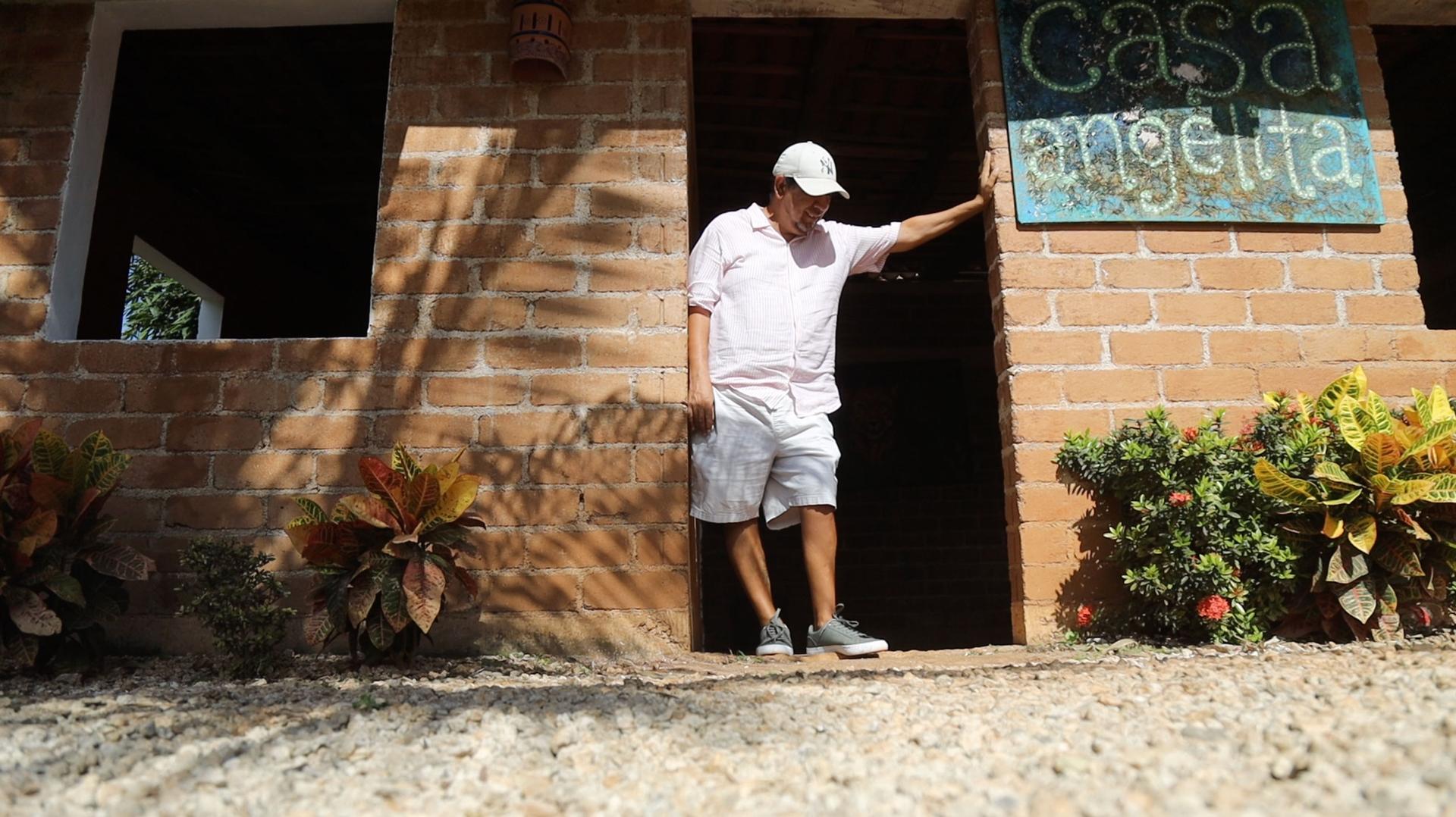To swim in the waters of Cancun’s celebrated beaches these days, beachgoers must first step over mats of seaweed and then push through it to take the plunge.
Sargassum is a brown, stringy seaweed that lines the shore in thick clumps and covers water surfaces stretching out about 20 feet.
“I was just commenting to my wife that there’s a lot of it and it smells bad,” tourist Roberto Arizmendi said.
The smelly seaweed collecting along Cancun’s shores are threatening the region’s efforts to boost tourism. But one resident who saw an opportunity in the menacing seaweed decided to transform it into useful building materials.
Omar Vazquez Sanchez used to lead one of many sargassum cleanup crews contracted by coastal hotels to clean their beaches on a daily basis. Some crews say they drag out about 30 truckloads of seaweed per day — most of which ends up in giant piles dumped out of town.
About four years ago, Sanchez got the idea to turn the seaweed into what he calls “sargablocks.”

He built his first building with sargablocks modeled after his grandmother’s tiny home and he named it Casa Angelita, after his mother.
“It’s withstood five hurricanes and six tropical storms and it’s still intact,” he said.
Sanchez’s small operation sits just off the highway in the Mexican town of Puerto Morelos, about a half hour south of Cancun.
Huge mounds of seaweed sit out back baking in the sun. It takes three days for the sargassum to be dried, composted and processed.
Sanchez said their sargablocks are made from a mixture of ground sargassum, limestone and other organic material.

Turning sargassum into bricks has helped to abate several environmental threats.
When sargassum starts to decay, it can release toxic hydrogen sulfide, which is a poisonous gas to humans. Sargassum also cuts off oxygen levels in water, creating deadly conditions for many marine animals and the region’s coral reefs.
“We began to see the death of marine life on a massive scale in the summer of 2018,” researcher Rosa Elisa Rodríguez said during a talk with the University of Mexico a couple of years ago.
She said that as much as 40% of Mexico’s Caribbean coral reefs were lost between 2018 and 2019 due to the arrival of massive waves of sargassum.
The seaweed grows naturally in beds on the surface of the South Atlantic. There, it’s an important part of the ecosystem — a breeding ground for local marine life. But scientists say the beds have exploded in size in recent years due to rising sea temperatures, excess fertilizer runoff and possibly also Amazon deforestation, which dumps high levels of nutrients into the sea — helping the algae bloom.
This May, 62,000 tons of it washed up on beaches in and around Cancun — the highest total seen yet.
Back at Sanchez’ brick-building operation, two young men in jeans, sandals and baseball caps shoveled the sargassum mixture into big buckets. They carried it up a ladder and dumped it into the top of a blue 7-foot-tall block-making machine.
The machine compacts the dirt, and pushes out two footlong, brown sargablocks at a time along a little conveyor belt.
Sanchez and two employees placed the blocks in rows to dry in the sun. After about six hours, they were ready.

Vazquez said the machine can make almost 485 blocks an hour or 3,000 blocks a day.
“They’re very resistant. And they have this added value that no product in the world has,” he said.
“We clean the beaches. We help clean up all of this sargassum, which kills fish and the reef, and we create jobs for people in need.”
Sanchez has 16 full-time employees. Most of them have battled addictions, something Sanchez himself has faced.
Sanchez has had a hard life. His mother immigrated, undocumented, with him and his siblings to the United States when he was just a kid. He said instead of studying, he had to work in the fields. Today, he said, he wants to give back.
“I want this to be one of the most important businesses in the country, so that others don’t have to emigrate elsewhere. Leaving their family and suffering like we did,” he said.
As part of his mission, he’s also donating sargablock homes to low-income families — they each require up to 20 tons of the seaweed. He’s built 13 homes so far.
Elizabeth del Carmen López, a street vendor, received her home in December. The single mother had previously lived in a one-room wooden shack with her two daughters.
“It was pretty much our Christmas present,” she said. “The house is beautiful. It’s refreshing. Cool in the heat. And we feel safer.”
Sanchez and his operation isn’t going to stop sargassum from arriving on Mexico’s shores. Experts say the algae is going to keep coming and it’s likely going to get worse.
But Sanchez said what he did was take a big problem and come up with a small solution — one he hopes to see grow in the coming years.
“We are destroying our planet,” Vazquez said.
“We need to contaminate less. Destroy less. Protect the mangroves and the forest. Global warming is a reality. And that is something that everyone needs to understand. What are we going to leave for our children?”
